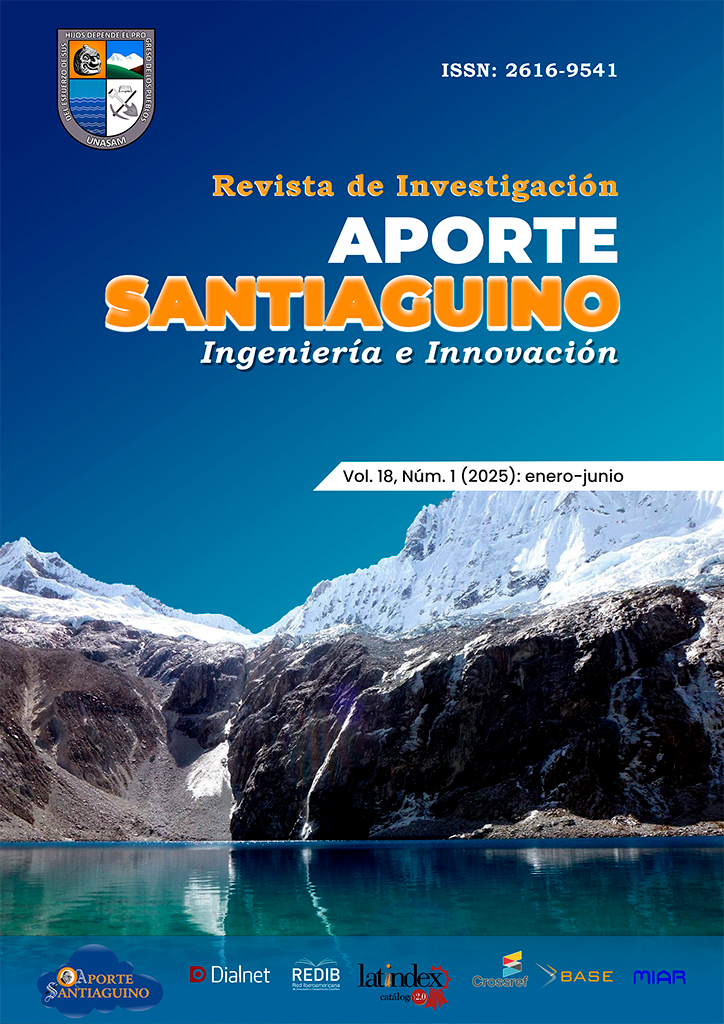Determination of the optimal tilt angle to improve solar capture in thermal and photovoltaic installations in areas close to latitude 0°
DOI:
https://doi.org/10.32911/as.2025.v18.n1.1235Keywords:
Sunshine, Slope, Correction, IrradiationAbstract
In areas near to the equator, there are serious difficulties for the location and inclination of thermal and photovoltaic installations, due to the presence of cloud cover, heavy rainfall, variable microclimates and change in the daily angular position of the sun, that form apparent trajectories, which considering the solar noon and the vertical of the locality, form zenith angles that change from +23.45° on June 21 to -23.45° on December 22 of each year. These factors significantly reduce the capacity to capture sunlight, and consequently the performance of fixed installations that use solar energy for their operation. Also, the lack of knowledge of these climatic conditions and solar radiation can significantly affect the optimal sizing of flat collectors or photovoltaic panels, with the consequent low energy productivity and minimum benefit-cost ratio. Therefore, the objective of this research is to determine the optimal angles of inclination, for which the city of Sangolquí-Ecuador is taken as a reference, which is located at a latitude of -0.3º and a longitude of -78.44º.
Downloads
References
Allen, R. G., Trezza, R., & Tasumi, M. (2006). Analytical integrated functions for daily solar radiation on slopes. Agricultural and Forest Meteorology. https://doi.org/10.1016/j.agrformet.2006.05012
Arribas, L., Bragado, J., & Caamaño, E. (1999). Energía solar fotovoltaica y cooperación al desarrollo. IEPALA.
Bakirci, K. (2012). General models for optimum tilt angles of solar panels: Turkey case study. Renewable and Sustainable Energy Reviews, 16, 6149–6159. https://doi.org/10.1016/j.rser.2012.07.009
Carg, H. P., & Carg, S. N. (1993). Measurement of solar radiation - I. Radiation instruments. Renewable Energy, 3(4–5), 321–333. https://doi.org/10.1016/0960-1481(93)9099-3
Duffie, J. A., & Beckman, W. A. (2006). Solar engineering of thermal processes (3rd ed.). John Wiley & Sons.
Ekadewi, A., Handoyo, B., & Djatmiko, I. (2012). The optimal tilt angle of a solar collector. International Conference on Sustainable Energy Engineering and Application (ICSAA 2012).
Escalona, M. I., Solís, L. O., Castañeda, C. L., Olvera, C. A., & Martínez, M. R. (2024). Comparative analysis of solar radiation forecasting techniques in Zacatecas, México. Applied Sciences, 14, 7449. https://doi.org/10.3390/app14177449
Goswami, D. Y. (2023). Principles of solar engineering. Taylor and Francis.
Hay, J. E. (1993). Calculating solar radiation for inclined surfaces: Practical approaches. Renewable Energy, 3(45), 372–380.
Heywood, H. (1971). Operating experience with solar heating. JIHVE, 39, 61-69.
Jutglar, L. (2004). Energía solar: Energías alternativas y medio ambiente. Ediciones Ceac.
Keshavarz, S. A., Talebizadeh, P., Adalatia, S., & Mehrabian, M. A. (2022). Optimal slope angles to determine maximum solar energy gain for solar collectors used in Iran. International Journal of Renewable Energy Research, 2.
Khatib, A. T., Samiji, M. E., & Mlyuka, N. R. (2024). Optimum solar collector’s north-south tilt angles for Dar es Salaam and their influence on energy collection. Cleaner Engineering and Technology, 21, 100778. https://doi.org/10.1016/j.clet.2024.100778
Khosravi, A., Sandoval, O. R., Talebjedi, B., Laukkanen, T., García, J. J., & El Haj Assad, M. (2020). New correlations for determination of optimum slope angle of solar collectors. Energy Engineering. https://doi.org/10.32604/EE.2020.011024
Lunde, P. J. (1980). Solar thermal engineering, space heating and hot water systems. John Wiley & Sons.
Mousavi, S. A., Hizam, H., & Gomes, C. (2017). Estimation of hourly, daily and monthly global solar radiation on inclined surfaces: Model revisited. Energies, 10(1), 134. https://doi.org/10.3390/en10010134
Muzathik, A. M., Ibrahim, M. Z., Samo, K. B., & Wan Nik, W. B. (2010). Estimation of solar global irradiation on horizontal and inclined surfaces based on the horizontal measurements. Energy. https://doi.org/10.1016/j.energy.2010.12.003
Myers, D. R. (2003, September 15–16). Solar radiation modeling and measurements for renewable energy applications: Data and model quality. National Renewable Energy Laboratory, Edinburg, Scotland.
Nijegorodov, N., Devan, K. R. S., Jain, P. K., & Carlsson, S. (1994). Atmospheric transmittance models and an analytical method to predict the optimum slope of an absorber plate variously oriented at any latitude. Renewable Energy, 4(5), 529–543.
Norris, D. J. (1996). Solar radiation on inclined surfaces. Solar Energy, 10(2), 72–76.
Oliveira, M., López, H. S., Mendonga, P., & Tenpierik, M. (2024). Solar radiation measurements – Techniques and instrumentation. Buildings, 14(7). https://doi.org/10.3390/buildings14072117
Qiu, G., & Riffat, S. B. (2003). Optimum tilt angle of solar collectors and its impact on performance. International Journal of Ambient Energy, 24(1), 13–20. https://doi.org/10.1080/01430750.2003.9674898
Rufes Martines, P. (2010). Energía solar térmica: Técnicas para su aprovechamiento (1ra ed.). Editorial Marcombo.
Tangkemanda, A., & Susanto, A. (s.f.). The effect of collector slope angle on the performance of solar water heater. Sulawesi Selatan.
Yang, D. (s.f). Solar radiation on inclined surfaces: Corrections and benchmarks. Solar Energy, 136, 288–302. https://doi.org/10.1026/j.solener.2026.06.062
Younes, S., Claywell, R., & Muneer, T. (2005). Quality control of solar radiation data: Present status and proposed new approaches. Energy, 30, 1533–1549.
Downloads
Published
How to Cite
Issue
Section
License
Copyright (c) 2025 Segundo Guasumba Codena, Isidoro Lillo Bravo, José Díaz Santamaría , Hugo Bonifáz García ; Jerry Tacán Jaya

This work is licensed under a Creative Commons Attribution 4.0 International License.




















